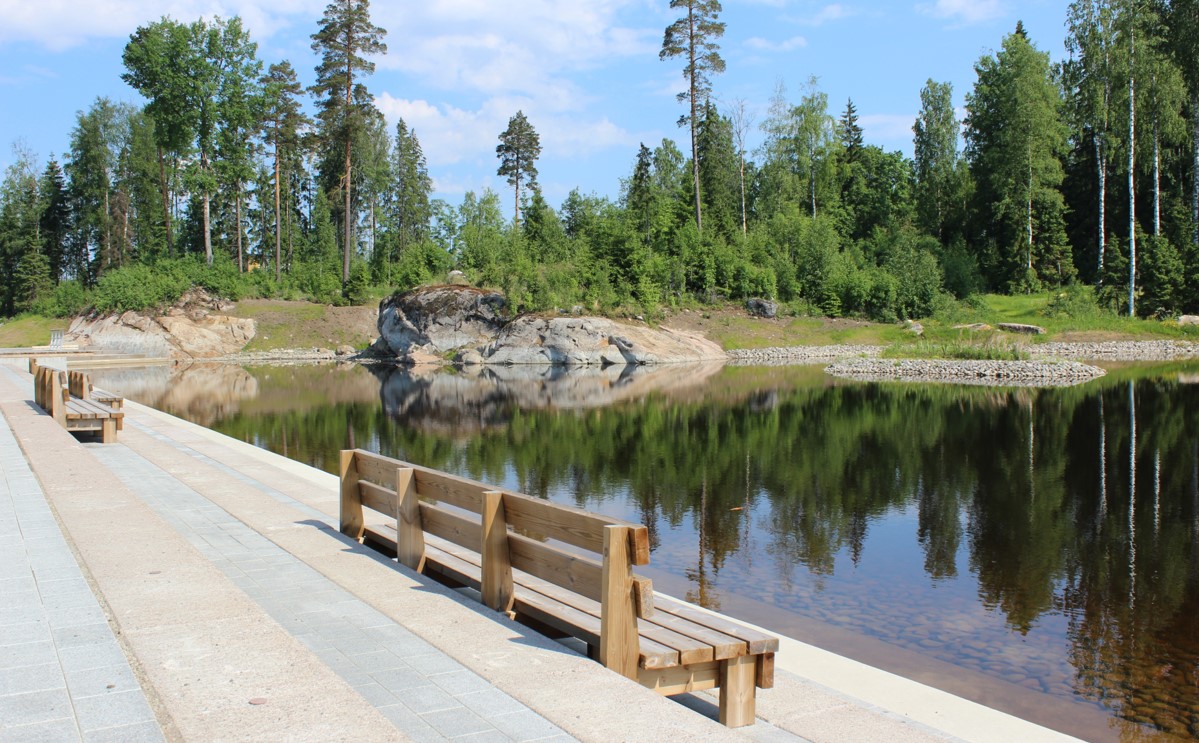
Co-creating Nature-based Solutions in Front-runner City Tampere
- Mon, 20/05/2019
The City of Tampere is a front-runner city in UNaLab, where nature-based solutions (NBS) for climate change driven problems are co-created, demonstrated, monitored and replicated. In UNaLab, Tampere focuses on 1) Adopting and further developing innovative nature based stormwater management, 2) Monitoring performance in boreal/artic climate conditions, 3) Developing the city’s administrative processes, and 4) Finding business models for the implementation of the NBS in the future.
Tampere has two UNaLab demonstration areas, or Urban Living Labs: Vuores and Hiedanranta. Vuores is a construction phase green district in the middle of natural waterbodies. Vuores’ stormwater management system is one of the largest in the Nordic countries, possibly even the largest in the northern hemisphere. Hiedanranta is a planning phase brownfield area that aims to be a smart, sustainable and dense centre of Western Tampere where new ideas, pilots and urban culture flourish.
Spring 2018 was an intense co-creation period in the Living Labs: a series of three (Visioning – Ideating – Testing) Design Thinking workshops were organised in each area, resulting in a total of six workshops, which attracted altogether 258 participants. The aim of the co-creation activities was to further develop preliminary NBS demonstration ideas, create new ideas and raise awareness of the novel concept of nature-based solutions. Participants included citizens, NGOs, public and private sector actors, and representatives from universities. The UNaLab co-creation process was supported by project partners, especially the European Network of Living Labs (ENoLL) and Ramboll Oy. The Design Thinking co-creation method proposes inviting the same wide group of stakeholders to each workshop. In Tampere, we modified this approach slightly so that each workshop was targeted to a specific focus area and to different stakeholder groups. The co-creation workshops in Tampere were also integrated with other events and urban planning processes in the city. This adaptation of the Design Thinking process was due to the assumption that it is difficult to attract participants to (three) co-creation events, and that R&D&I project activities are easily marginalised from dominant urban development processes.
![]()
Before co-creation, initial NBS demonstration ideas included: further development of Vuores’ nature-based stormwater management system with, e.g., biofilters and plot-scale NBS. There were also plans to test green roofs/walls and demonstrate micro-algae performance in water purification. In addition, online water/NBS performance monitoring was highlighted in initial plans. Co-creation activities resulted in some significant changes to the preliminary NBS plans.
In Hiedanranta, a new demonstration – a biofilter to manage seepage water from an old pulpmill landfill - was introduced because during the co-creation activities the recreational value of lake Näsijärvi was highlighted and smells from the old industrial fibre waste were seen to hinder that value. A local biochar producer participated in the co-creation process and the company’s products and expertise were used in the biofilter demonstration. The need for the initially planned green roof demonstration was highlighted in Hiedanranta, as one of the outcomes of the co-creation process was the idea of connecting inner yards and buildings to the blue-green network of the area. Some ideas collected in Hiedanranta's co-creation activities were passed on to city planners (e.g., the use of industrial heritage, leaving valuable biodiversity areas unbuilt) as the master plan of the area is currently being developed, and many NBS will be implemented after the UNaLab project is finished (next 5-10 years).
In Vuores, hopes for wilder nature (e.g., selection of plants) and encouragement of physical activities + accessibility (e.g., building duckboards) were taken into account when planning Vuores nature-based stormwater management systems and surrounding parks. Vuores' residents were particularly interested in local water quality; the recently-implemented online monitoring will provide residents with up-to-date information on local water quality. Furthermore, children’s role as “nature cops” monitoring the NBS has been enhanced by delivering water quality monitoring rucksacks to Vuores school and educating pupils to monitor water quality and macroinvertebrates. The demand for NBS information was fulfilled by creating interpretive signs to NBS sites and providing NBS information online.
![]()
UNaLab NBS demonstration plans were updated as a result of the co-creation activities, but first and foremost, co-creation was a two-way learning processes. Nature-based solution is a novel concept, which tends to act as an umbrella to more established concepts of ecosystem services and green infrastructure. Furthermore, climate change driven problems are presently not as severe or visible in the Nordic countries compared with many southern regions, which can make NBS seem less relevant. Subsequently, NBS education in different forms – the UNaLab NBS Handbook and its Finnish version, classroom teaching and field trips with school children, expert seminars, expert lectures on water quality trends in Vuores area and interpretive signs - were crucial and appreciated components of the learning and co-creation process.
This article was originally posted online by Rakennustekniikka on 9 April. The full article can be accessed here.